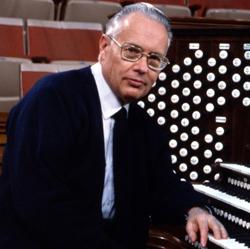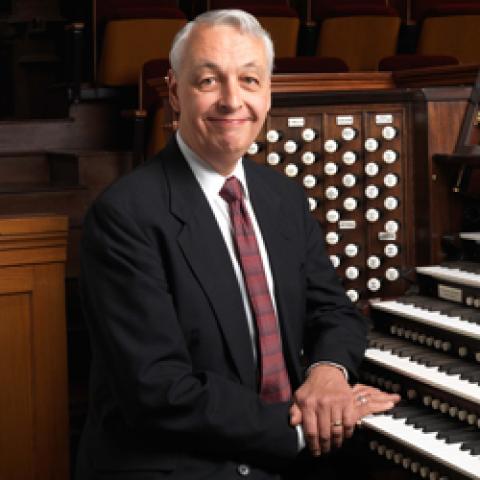
Robert Morton Cundick, Sr., organist and composer, died January 7 at the age of 89. He was a long-time organist of the Mormon Tabernacle in Salt Lake City, Utah, where he accompanied the Mormon Tabernacle Choir and was frequently heard on the weekly broadcast, Music and the Spoken Word. Cundick was born in 1926 in Salt Lake City, and by the age of twelve, he began service to his congregation as organist. He became a student of Tabernacle Organist Alexander Schreiner. After service in the United States Merchant Marine in World War II, Cundick attended the University of Utah, where he earned BFA, MFA, and PhD degrees from the university, the latter in composition. During his studies, he married Charlotte (Cholly) Clark, who was his organ student. In 1957, Cundick joined the faculty of Brigham Young University. In 1962, he was called to London, England, to serve as organist at the new Hyde Park Chapel of the Latter Day Saints, where his duties included a daily organ recital and broadcasts. After two years’ service there, he returned to Brigham Young. He served as an organist to the Mormon Tabernacle for 27 years.
In 1970 he was the first recipient of the American Guild of Organists’ S. Lewis Elmer Award, granted each year to the person who attains the highest score in either the Associateship or Fellowship examination. Cundick oversaw the 1980–83 installation of a 3-manual mechanical action organ by Robert Sipe in the Assembly Hall, the 1985–89 renovation of the 5-manual organ in the Tabernacle, and the design of the 1993 2-manual Casavant organ in the chapel of the Joseph Smith Memorial Building.
Following retirement in 1991, Cundick and his wife served as Directors of Hosting for the BYU Jerusalem Center in Jerusalem, Israel. Cundick was an avid composer and supporter of Mormon and Utah composers. In 2004, the Church of Jesus Christ of Latter-day Saints presented its Pearl Award of Lifetime Achievement to Cundick. Cundick’s compositional work spans numerous genres, including cantata (The Song of Nephi) and oratorio (The Redeemer). Robert Cundick is survived by his wife Cholly, children Robb (Laurel), Tom (Betsy), Ann Adams (Rob), Ruth Jackman (Dave), and Dave (Kim); brother Bert and sister Carol Hoopes (Grover), 23 grandchildren, and 38 great-grandchildren.



